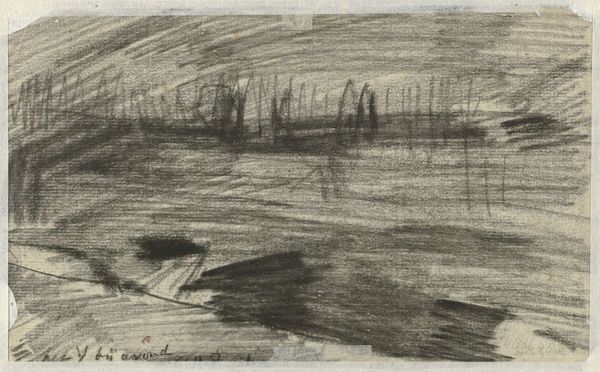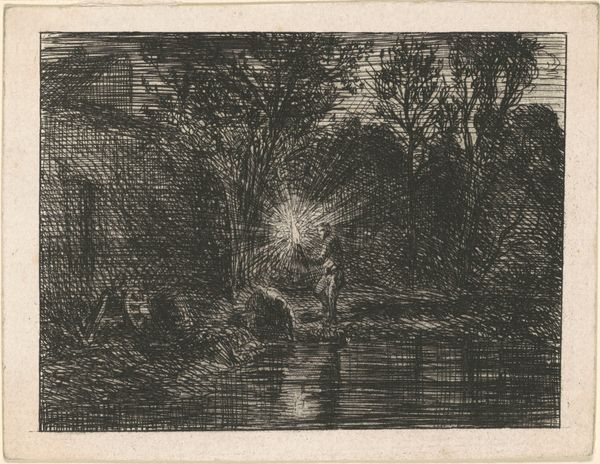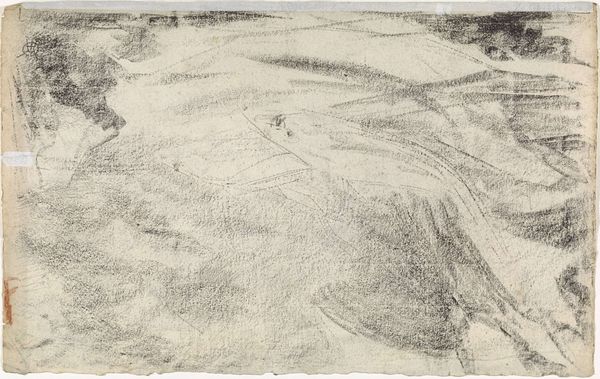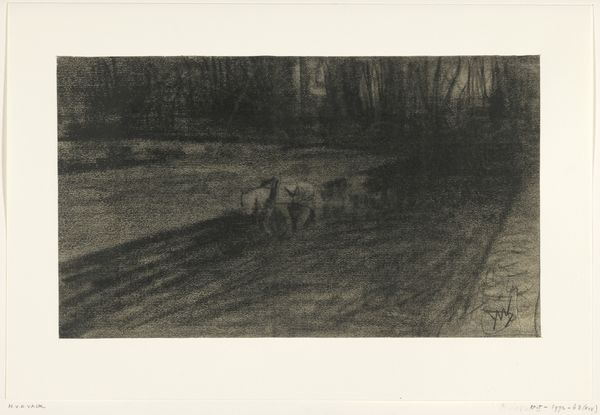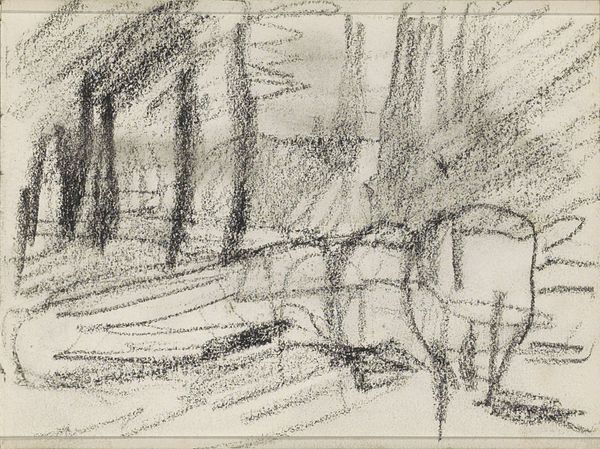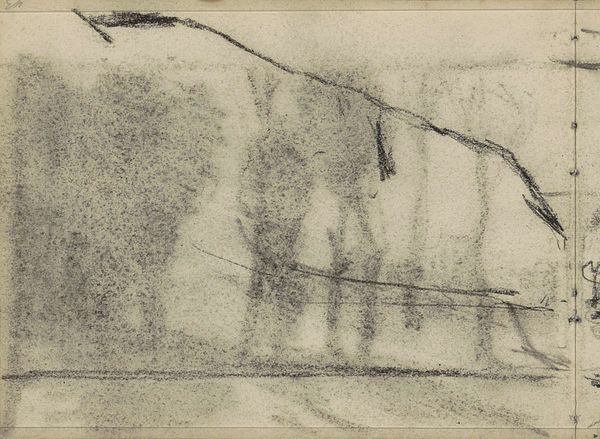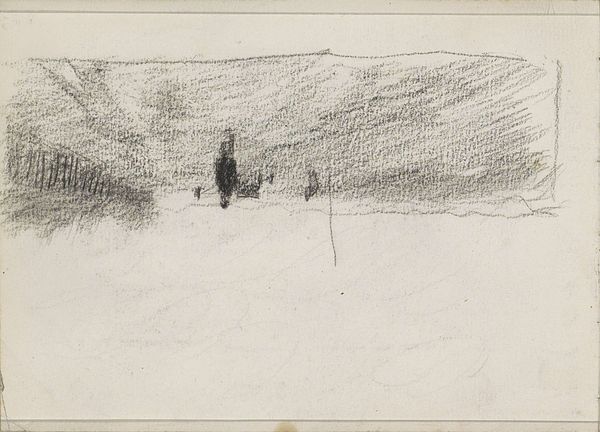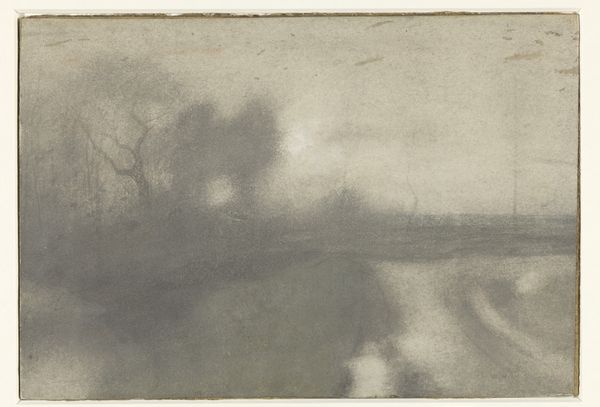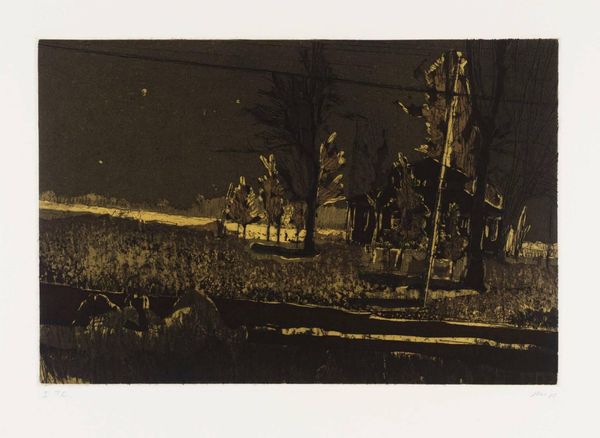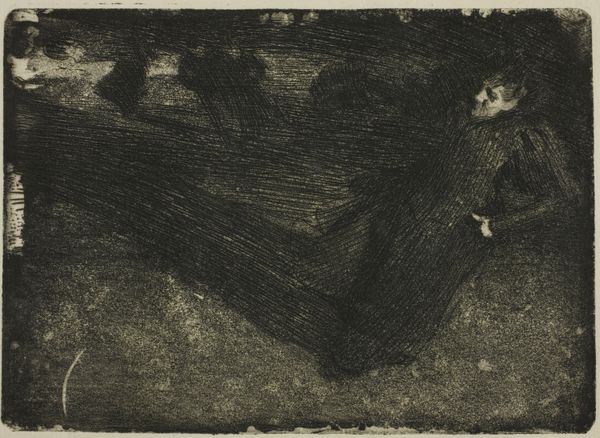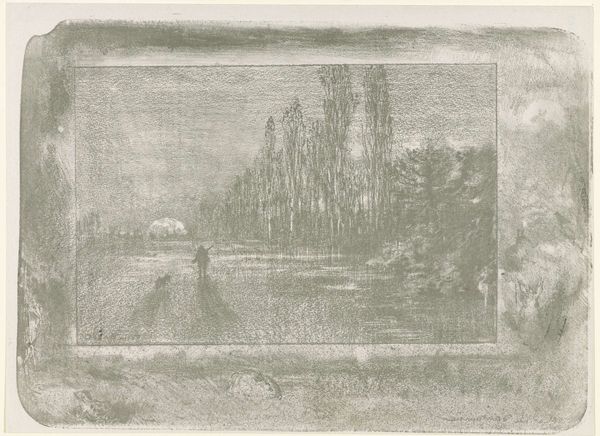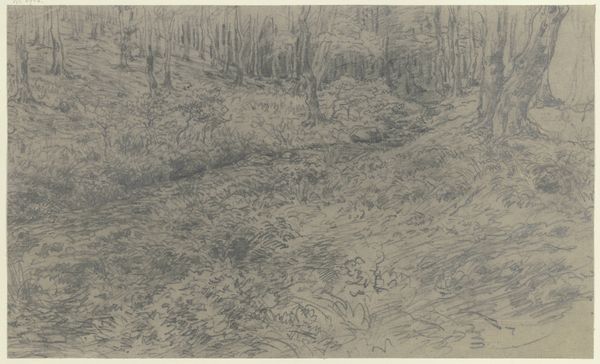
Schijnwerper over de toeschouwers op de tribunes van Circus Carré 1876 - 1924
0:00
0:00
gerritwillemdijsselhof
Rijksmuseum
Dimensions: height 280 mm, width 393 mm
Copyright: Rijks Museum: Open Domain
Editor: This graphite drawing, *Schijnwerper over de toeschouwers op de tribunes van Circus Carré*, translates to "Spotlight over the audience in the stands of Circus Carré," and was done by Gerrit Willem Dijsselhof somewhere between 1876 and 1924. It’s a very gestural piece and immediately made me think about the dynamic relationship between performer and spectator. How might one interpret such a visualization? Curator: That’s an interesting starting point. Thinking historically, consider the period in which it was made – late 19th, early 20th century. Public spectacles, like the circus, were incredibly popular forms of mass entertainment. This image seems to be less about the spectacle itself and more about the gaze, who is looking at whom? Editor: It's interesting that the beam of light appears to illuminate the audience instead of the performance. Does that invert the expected dynamic in some way? Curator: Precisely! It positions the audience as the object of attention. Are they being observed, scrutinized, even judged by the artist? The beam of light creates a focal point. In doing so, what power dynamics are being visualized through this medium and in the specific location of the circus? Editor: That's thought-provoking. Perhaps the drawing is commenting on the social performance of the audience itself, their role in creating the event's atmosphere? Like a critique on the observers? Curator: It’s certainly possible. Think about how this image circulates – within a museum context, far removed from its original environment. How does the act of exhibiting this drawing reshape its meaning and relevance for today's audience? What purpose do we prescribe? Editor: So the meaning evolves depending on the viewers. Thanks, I didn't quite look at it that way, so it’s interesting to consider that drawings can also represent that power. Curator: Absolutely, seeing is never neutral; it's always culturally and historically situated.
Comments
No comments
Be the first to comment and join the conversation on the ultimate creative platform.
